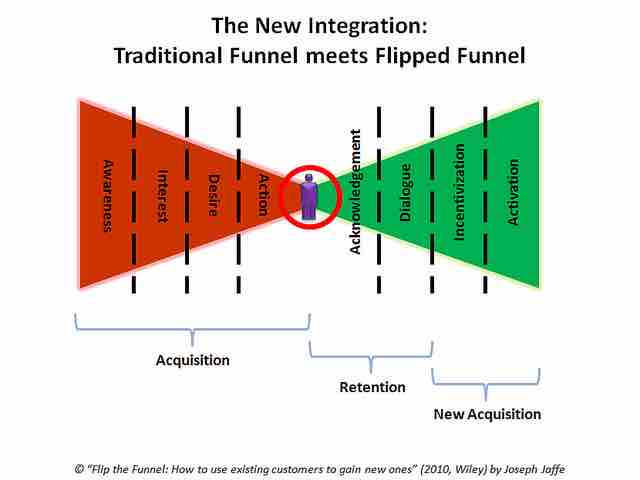Remind and Retain Customers
The promotional activities of an organization continue long after customer acquisition. Incorporating communications tactics that are effective in reminding current customers why they should continue purchasing a brand's products is just as important as promoting to potential customers. As more brands compete for consumer attention in an increasingly crowded marketplace, organizations must develop marketing communications strategies that address customer challenges, appeal to customer needs, and drive repeat sales.

Using Existing Customer to Gain New Customers
Nurturing customer relationships can lead to customer referrals and new business.
Promotional Tactics for Driving Repeat Purchases
One method organizations use to show appreciation for existing customers is personalized marketing. This practice had been most useful in online marketing, particularly via websites and email marketing. For example, a website can track a customer's interests and make suggestions for future purchases. E-commerce sites help customers select and prioritize choices by organizing items based on past online behavior and purchases. Some companies allow for products to be customized using a configuration system.
The emergence of database technology for developing personalized products, ads, and services for specific users with particular profile attributes has helped organizations tailor their offerings for existing customers. Amazon is one company that pioneered the "one-to-one marketing" and personalization tactics that delivered targeted offers and related products to users. Retention strategies that incorporate personalization features may include one or more of the following:
- Product bundling (combining several products or services into one "package" and offering them at a single price)
- Cross-selling (selling related products to current customers), cross promotions (giving discounts or other promotional incentives to purchasers of related products)
- Loyalty programs (giving incentives for frequent purchases or customer referrals)
- Increasing switching costs (adding termination costs, such as mortgage termination fees)
- Integrating computer systems of multiple organizations (primarily in industrial marketing)
Other marketing communications tactics include discounts, offer redemptions, and point systems. The interactivity between brands and consumers occurs through the offer redemptions recorded by the point-of-sale systems, which can then update each individual shopper's profile. Personalized marketing can be more accurate when based solely upon individual purchasing records due to the simplified and repetitive nature of retailers such as supermarkets.
Retaining Customers Through Relationship Marketing
Authors such as Don Peppers and Martha Rogers discuss the transition from managing products to managing customers, and differentiating customers rather than just products. This transition allows companies to develop economies of scope rather than economies of scale. To retain their customer base and satisfy customer requirements above those of competitors, brands must engage in the following process:
- Identify potential customers.
- Determine their needs and lifetime value to the company.
- Interact with customers and gather data on their requirements and behavior patterns.
- Customize products, services, and communications to individual customers.
Implementing these relationship marketing practices helps companies counterbalance new customers and opportunities with current and existing customers to maximize profit. It also counteracts the theory that new customers must be gained at the expense of losing older customers. Many companies in competing markets will redirect or allocate large amounts of resources toward customer retention, particularly in markets with increasing competition. Lead generation activities geared towards attracting new customers may be more expensive than the money and time spent on promotional tactics to retain existing customers. This idea represents a shift from classic marketing theories, which focus on attracting new customers and creating transactions rather than maintaining current customers.